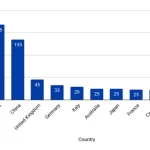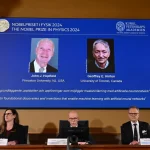
Ancestral Genome Reconstruction Illuminates the World of Degenerate Transposable Elements
January 31, 2024In a pioneering study that could redefine our understanding of genomics, Matsushima et al. have introduced a revolutionary computational method to annotate transposable elements (TEs) by exploring reconstructed ancestral genomes. The research not only brought to light a myriad of previously undiscovered degenerate TEs but also significantly expanded genome coverage, offering profound insights into the functional impact of TEs on genome regulation and gene expression.
Matsushima et al.’s breakthrough methodology uncovered a wealth of functional sequences derived from ancient and highly degenerate TEs that had previously slipped through the cracks of conventional annotation methods. When applied to the human genome, their approach resulted in a substantial 10.8% increase in coverage over the latest annotations, showcasing its effectiveness in identifying previously overlooked TEs.
The study revealed the involvement of degenerate TEs in various cis-regulatory elements and transcription factor binding sites, shedding light on their crucial role in shaping the intricate architecture of the genome. Additionally, Matsushima et al. reported the presence of unannotated chimeric transcripts between degenerate TEs and human genes expressed in embryos, underlining the functional impact of these TEs on gene expression.
Ancestral genome reconstruction played a pivotal role in this groundbreaking research. By utilizing information from reconstructed ancestral genomes (RAGs) derived from hundreds of species, Matsushima’s method provided a broader evolutionary perspective on TE sequences. The correction for later-occurring mutational changes within RAGs made it possible to identify highly degenerate and ancient TEs that often eluded traditional annotation methods. The sensitivity in recovering degenerate TEs through RAGs allowed for the discovery of previously unannotated integrants in the human genome.
The implications of this research extend beyond the laboratory, touching upon fundamental aspects of genome evolution and genetic diversity. The identification of previously unannotated degenerate TEs sheds light on a previously underappreciated source of genetic variation within genomes. Insights into the long-term evolutionary dynamics of TEs contribute to our broader understanding of genome evolution.
The functional contributions of degenerate TEs to various genomic elements underscore their regulatory and adaptive roles in shaping genetic diversity. Beyond its scientific significance, the development of a computational method for TE annotation through ancestral genome reconstruction represents a significant methodological advancement in the field. It opens new avenues for research, inspiring further innovations in the study of TEs and genome evolution.
Matsushima et al.’s research marks a paradigm shift in our comprehension of the intricate interplay between TEs and genomic evolution. It beckons the scientific community to explore the uncharted territories of genomics, offering a glimpse into the hidden dance of genomic evolution that may hold the key to unlocking the mysteries of life’s diversity.
Reference:
Matsushima, W., Planet, E., & Trono, D. (2024). Ancestral genome reconstruction enhances transposable element annotation by identifying degenerate integrants. Cell Genomics, 4, 100497. https://doi.org/10.1016/j.xgen.2024.100497


















